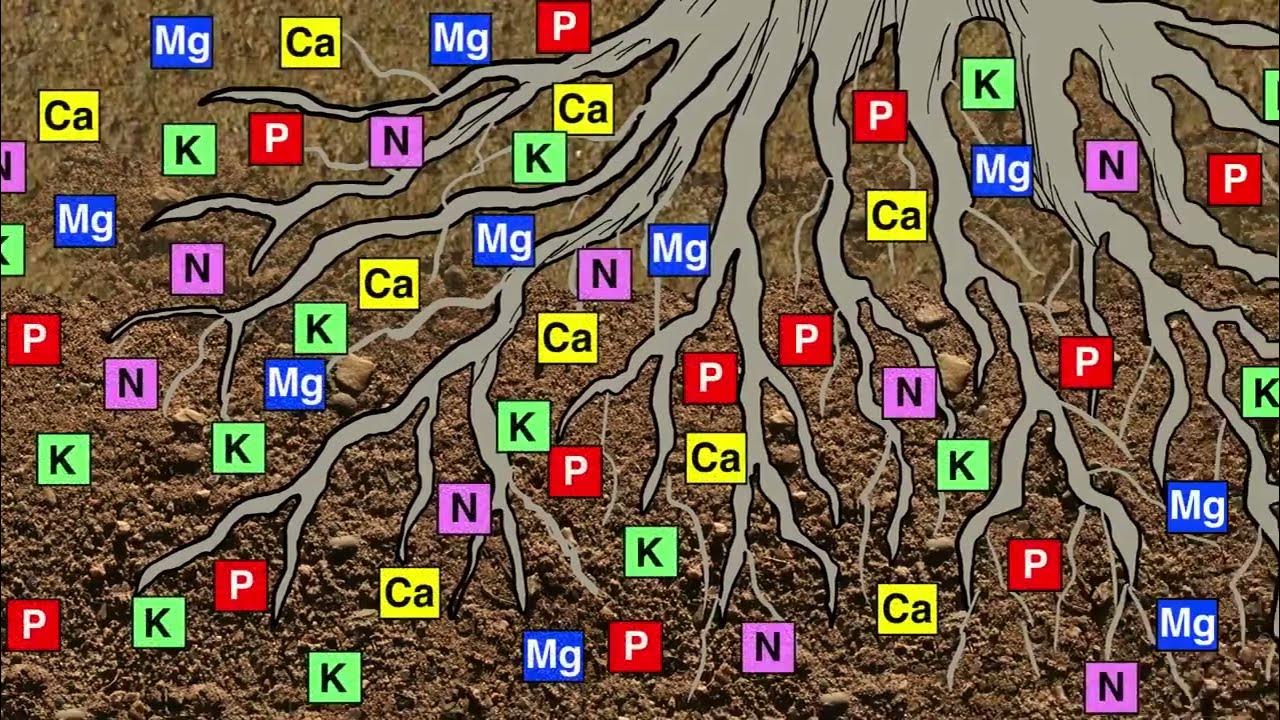Let's talk about soil
Summary
TLDRThis urgent call to action highlights the critical importance of soil, emphasizing that it is a finite resource essential for life. The video discusses the alarming rate of soil depletion due to deforestation, inadequate farming practices, and urbanization, which lead to significant economic costs and food insecurity. With projections suggesting a dramatic reduction in arable land by 2050, it stresses the need for sustainable practices and equitable distribution of land. Ultimately, the message urges society to recognize the value of soil and take proactive steps to protect it for future generations.
Takeaways
- 🌍 Soil is essential for life, providing the nutrients we need to survive.
- ⏳ Only 10 cm of fertile soil takes 2,000 years to form, yet it's being depleted rapidly.
- 🌳 Every year, 13 million hectares of forest are lost, significantly harming soil protection.
- 📉 Erosion led to a loss of 24 billion tons of fertile soil in 2011 alone, costing $490 billion worldwide.
- 🏙️ Urbanization is sealing half of the available fertile soil, making it unusable for agriculture.
- 💰 The global race for soil resources often results in land grabbing and displacement of vulnerable communities.
- 🍽️ By 2050, arable land per person is projected to be halved, increasing food insecurity for 1 billion people.
- 🔍 Soil and land issues are often overlooked by policymakers, despite their critical importance to our future.
- 📉 Our current agricultural practices are unsustainable, depleting soil without replenishing it.
- 🛑 We must take immediate action to protect and preserve soil for future generations.
Q & A
Why is soil considered essential for life?
-Soil is vital for life as it supports plant growth, which in turn feeds humans and animals. It is formed from decomposed rocks and organic matter, providing nutrients necessary for sustenance.
How long does it take to create just 10 cm of fertile soil?
-It takes approximately 2,000 years to form just 10 cm of fertile soil through natural processes like weathering and decomposition.
What are some major causes of soil erosion mentioned in the script?
-Major causes of soil erosion include deforestation, inadequate farming practices, monocultures, and leaving fields unprotected after harvest.
What was the amount of fertile soil lost in 2011, and what does that translate to per person?
-In 2011, approximately 24 billion tons of fertile soil were lost, which equates to a loss of about 3.4 tons per person worldwide.
How does urbanization impact soil quality?
-Urbanization negatively affects soil quality by sealing off fertile land, rendering it unproductive. In Europe, an area as large as Berlin is transformed into urban areas each year, with half of the soils being sealed.
What is land grabbing, and who does it typically affect?
-Land grabbing refers to the acquisition of large areas of land, often through questionable means, which typically affects the poorest communities, displacing families and disrupting livelihoods.
What projection is made about arable land availability by 2050?
-By 2050, projections suggest that the available arable land per inhabitant will be reduced by half, exacerbating food insecurity.
How many people go to bed hungry each night, according to the script?
-Currently, around 1 billion people go to bed hungry every night, a number expected to rise if soil distribution and agricultural yields are not improved.
What analogy is used to describe our current use of soil resources?
-The script compares our current use of soil to withdrawing money from a bank account without making any deposits, indicating that this unsustainable practice will eventually lead to depletion.
What actions can be taken to protect soil for future generations?
-To protect soil, we must recognize it as a living entity that requires care, safeguard the right to soil through law, and implement sustainable practices to preserve its fertility.
Outlines

Esta sección está disponible solo para usuarios con suscripción. Por favor, mejora tu plan para acceder a esta parte.
Mejorar ahoraMindmap

Esta sección está disponible solo para usuarios con suscripción. Por favor, mejora tu plan para acceder a esta parte.
Mejorar ahoraKeywords

Esta sección está disponible solo para usuarios con suscripción. Por favor, mejora tu plan para acceder a esta parte.
Mejorar ahoraHighlights

Esta sección está disponible solo para usuarios con suscripción. Por favor, mejora tu plan para acceder a esta parte.
Mejorar ahoraTranscripts

Esta sección está disponible solo para usuarios con suscripción. Por favor, mejora tu plan para acceder a esta parte.
Mejorar ahoraVer Más Videos Relacionados

Let's Talk About Soil - English - subtitled

The Importance of Soil | Essentials of Environmental Science

Land Degradation Neutrality. Why it matters, how it's done.

The Surprising Solutions to the World's Water Crisis

The Moraine Can't Wait: Save the Oak Ridges Moraine

September: Soils Protect the Natural Environment
5.0 / 5 (0 votes)
